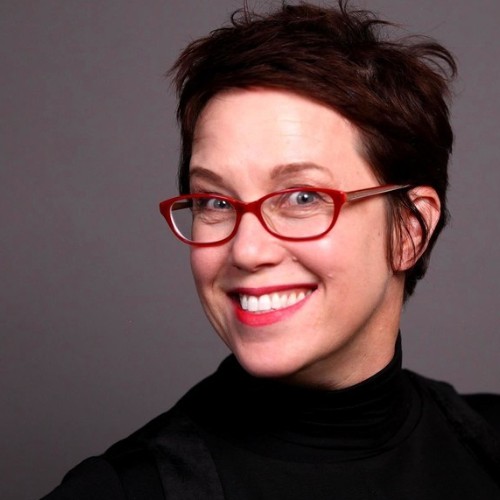The trends are clear: Brands are taking more and more creative and advertising capabilities in-house, and what used to be centralised teams are now dispersed — and likely to remain that way.
But as in-house creative teams undergo radical change, two things are certain:
- Change will continue, and
- We need more incredible operations leaders to make sense of it.
While there are many operations roles out there, let's hone in on the fabulous role of the Creative Operations leader on an in-house design team.
I've been in creative staffing for over 20 years, but it wasn't until I was sitting in a room with 75 operations leaders at a conference in 2019 that I understood the power of this role. Leader after leader took the stage to share mind-blowing solutions to huge real-world challenges that the whole group was excited to discuss. These were confident, smart, capable leaders who understood the value of driving business results, not just getting things done.
To clarify, there's not just one creative operations role, but in general, these leaders fit within an in-house creative team (working closely with the marketing department) and ensure that the team has the people, processes, and technology needed to deliver exceptional work.
Here's what they're not: Project Managers, Account Managers, Producers, Graphic Designers — though they understand all those roles and may have any or all in their backgrounds. What they ARE is the glue that holds creative and marketing teams together, and they know exactly what it takes to keep a creative team operating at peak performance.
There are three levers in particular that Creative Ops leaders are great at optimising:
STRUCTURE: Building an efficient organisational structure
PROCESS: Developing great processes for communication and delivery
UTILISATION: Defining key metrics to show resource utilisation
There's not a creative team in the world that doesn't need those levers optimised. For teams without an ops leader, either those items have been left to chance, or worse — a creative leader has been tasked with figuring them out while simultaneously generating jaw-dropping, customer-engaging design work. In those situations, creative managers have to resource their own projects, help ensure those projects stay on track, and resolve issues along the way.
For many creative leaders, operational functions are not as high a priority, not as interesting, or simply not in their skill set. And that's OK. But ignoring operations is a mistake.
Enter the Creative Operations leader…
A good ops manager can handle talent resourcing, streamline processes, and maximize utilisation without batting an eye.
A great Creative Operations leader does all that while delivering business value to the organisation through their strategic problem-solving approach, maximising the impact your team has on the overall business.
In fact, I've personally witnessed this in our InsideOut leadership roundtables, where leaders from high-profile organizations with complex issues gather to learn, connect, and share ideas.
You can imagine the breadth and depth of issues presented by a pandemic. Remote work alone broke every process, tested every tool, complicated measurement, and disrupted critical relationships. It created gaps in communication that slowed the most efficient workflows, and financial pressures meant a reduction in resources that required adjustments in job responsibilities and taxed every staff member who remained.
Though I don't know of a team who came out unscathed, I will guarantee you that those who had a stellar Creative Operations leader on staff came out ahead! And let's face it. Even as a hopeful light appears at the end of the pandemic tunnel, work will never be the same.
Fortunately, Creative Operations Leaders are well-suited to guide creative teams through future changes and are fine-tuning their skills to add even more value.
I had the opportunity last September to speak at a conference with Corey O'Brien about the emerging skills that Creative Ops leaders would need for the future. After talking to over 100 in-house leaders, these three emerged:
PERSUASION: The ability to effectively persuade others, remotely
RESILIENCE: Cultivating an environment in which change is expected and welcome
IMPACT: Shifting focus from measuring utilisation to deriving business impact
These skills aren't fundamentally new to the creative operations role, but they've become essential to a creative team's success. Let's take a look at each with some examples:
PERSUASION
Instead of trying to perfect the org chart, which has changed radically over the past year and will continue to do so, ops leaders are deploying their powers of persuasion to build new behaviours across any org structure.
As an example of how this skill makes a difference, a leader from our InsideOut group went through the painful process of helping merge multiple, disconnected creative teams into one. Each group came with their own set of expectations and ways of working they already liked, so getting them on the same page was not going to be easy. To do so, she got all the teams together in a Creative Summit to discuss “What's not working right now.” Who doesn't want to weigh in on that?! During that event she made sure that each team felt heard, and following that brainstorm session they worked together on their list of problems and came up with new ways of work that worked for everyone. By engaging and persuading teams that change was necessary, she gained a powerful consensus to keep moving forward.
RESILIENCE
Beyond developing great processes — only to build new ones as the business pivots — Creative Operations leaders set the stage for a state of constant change, and teach teams and partners how to leverage resilience.
To illustrate this point, a Senior Ops director at a leading financial firm decided to lead by example, providing weekly updates as the health crisis unfolded and being completely honest about what she did — and did not — know.
Her choice to be candid helped her team see that it's OK to keep moving forward without all the answers and reassured them that she would keep them in the loop. In fact, providing transparency and an outlet for questions is a key function of the ops role, as is encouraging self-care.
One crafty leader at a large communications company reframed the new work situation by acknowledging that “80% is the new 100%,” and encouraging staff to take the time they need to relieve anxiety. Clearly, ops leaders play an active role in helping teams “recover from or adjust easily to misfortune or change,” the very definition of resilience.
UTILISATION
No longer is utilisation the prized metric, as it only tells part of the story. Instead, the ability to articulate how that time spent led to actual business results is critical.
To prove this point, an ops leader at one of the world's largest financial institutions has been an advocate for metrics for a long time. But as measures like hours worked became difficult to track — it's impossible to even know when people are working any more — this leader started measuring different data points. In fact, instead of just numbers, he captured and shared stories of how his team was solving specific problems, making their impact real and memorable — and shareable.
To a creative group, the more senior leadership sees the value of the team's work, the more they will invest in its future. Plus, utilisation is just a measure of efficiency, and in the long-run, simply being efficient is not as important as having an impact on the business itself.
If you've made it this far and don't yet think your team needs a Creative Operations leader, check again.
Creative Operations leaders are strategic superheroes.
These leaders are strategic superheroes who can take your team from good to amazing by aligning people, process and technology to drive business results. Through it all, they build partnerships with internal stakeholders and external resources. They help raise the quality, reduce the waste, and ultimately show the value of a creative team's work.
What are you waiting for? Your team will thank you for it.
[Shameless plug: Aquent can help you find an amazing Creative Operations leader.]
Latest.

AI adoption failing isn’t the tech, it’s the people. How smart businesses overcome this.
Technology, Thought Leadership, Industry Trends

Temp-to-perm is the best way to hire today.
Hiring Insights

How to keep top talent: Strategies for successful onboarding
Hiring Insights, Ask Aquent, Training Resources




